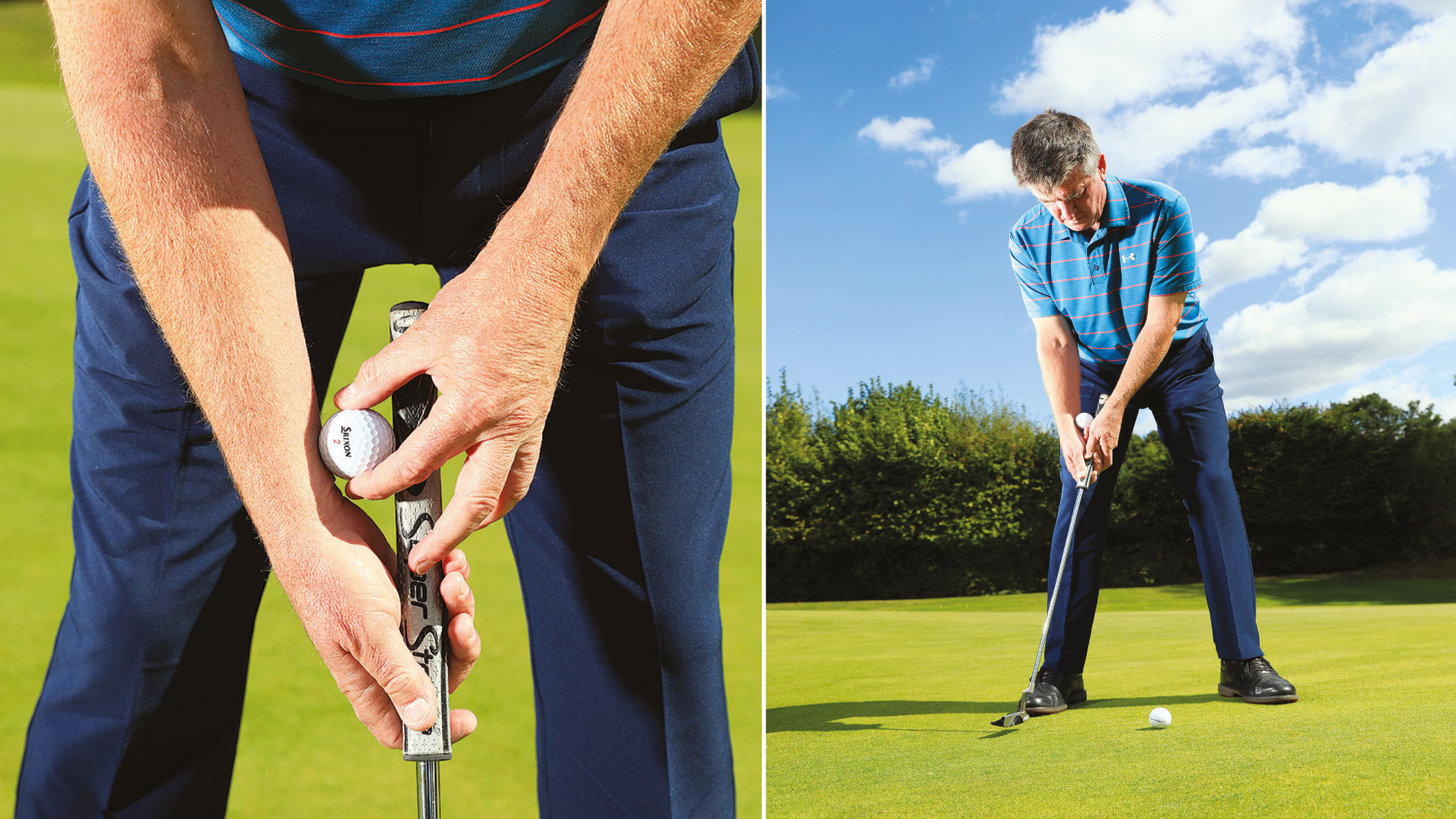
Putting, perhaps more than any other part of the game, tends to vary dramatically from one round to the next - certainly where club golfers and mid to high handicappers are concerned.
We could talk a lot about putting technique - which is obviously crucial - and recommend plenty of the best putting tips, but sometimes it can help just to focus on one particular thing.
In this article, we've asked Golf Monthly Top 50 Coach Clive Tucker to recommend one drill that can help you to improve your consistency on the greens.
We all have bad rounds with the putter, of course, even the pros. However, what many of us suffer with is really wild inconsistency. So, here's how we're going to fix that...
HOW TO IMPROVE YOUR PUTTING CONSISTENCY
This is a great drill if you’re struggling for consistency as it will help you regain control of the putter face. If the path of somebody’s putting stroke looks fine but they’re getting an inconsistent roll, the first thing I would look at is how well they’re controlling the face.
If the path is okay but the face is changeable, it’s usually down to a grip pressure change during the stroke. Even subtle pressure changes can affect what the wrists and hands do.
To add greater consistency, place a ball between your trail forearm (as below) and the putter grip. With the ball in place, you will feel the pressure against your forearm and should then look to maintain that during your stroke.
If you maintain it and keep the ball in place (as below), the face will feel very stable. If you lose the pressure in the backswing, the ball will fall out, highlighting unwanted wrist and hand movement.
To make sure you perform this correctly, and you understand what this putting drill is for, here's a step-by-step guide on to do...
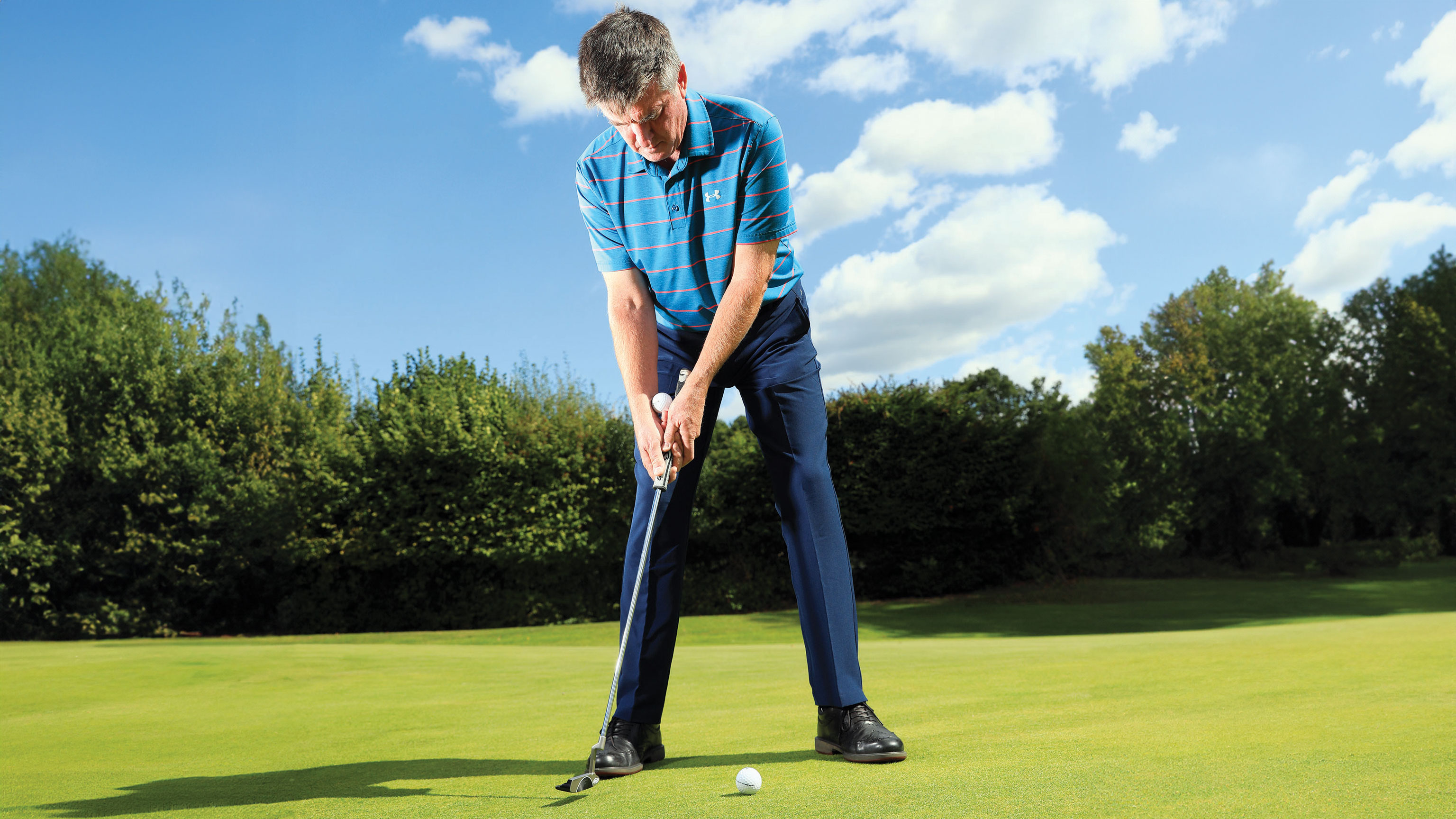
1. Added pressure
Placing a golf ball between your forearm and putter grip, as in the photo below, will create a feeling of pressure at set-up.
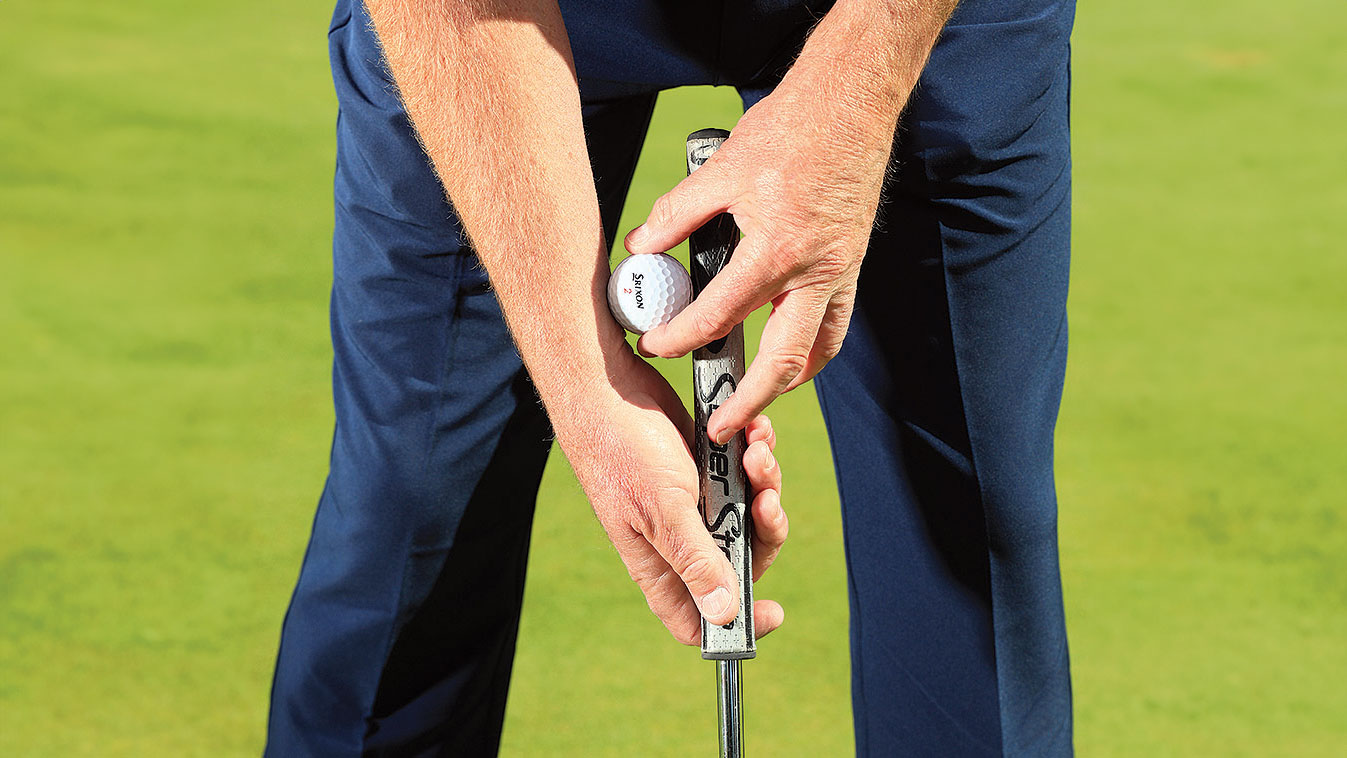
2. Keep it in place
The aim is to keep the golf ball in place. If you can maintain that pressure throughout your stroke, you’ll be able to return the face squarely to the ball more consistently.
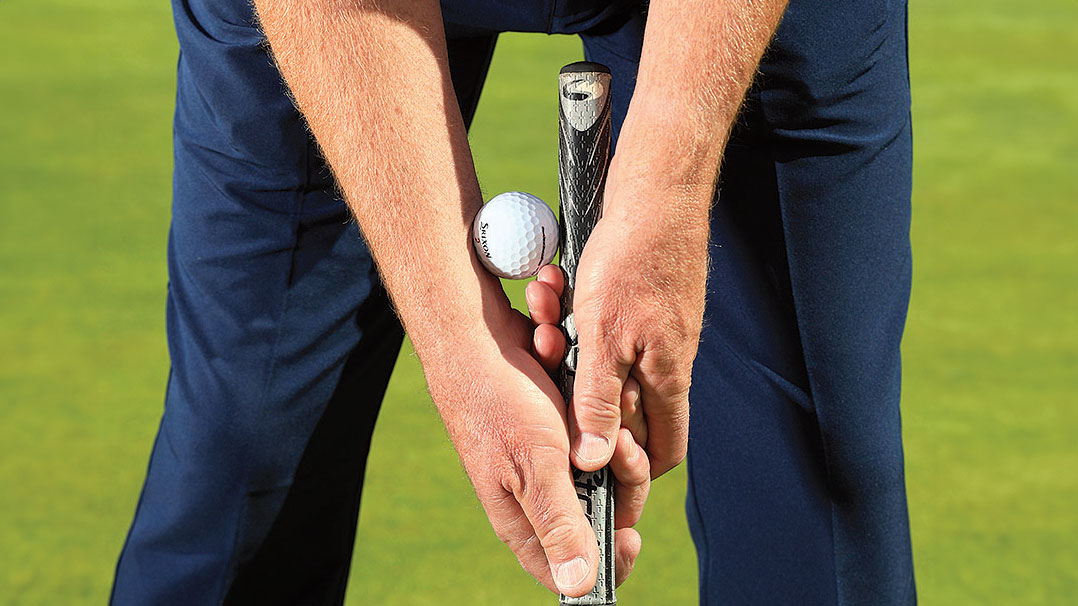
3. Unwanted movement
The ball may fall on the backswing, indicating a problem, but if not, the pressure will stop you flicking the wrists, like I've done here.
Like a lot of golf putting drills, this one can be effective in a number of different ways, even helping to cure the putting yips. Give it a go, and I'm convinced it can help you to groove a better and more reliable stroke.
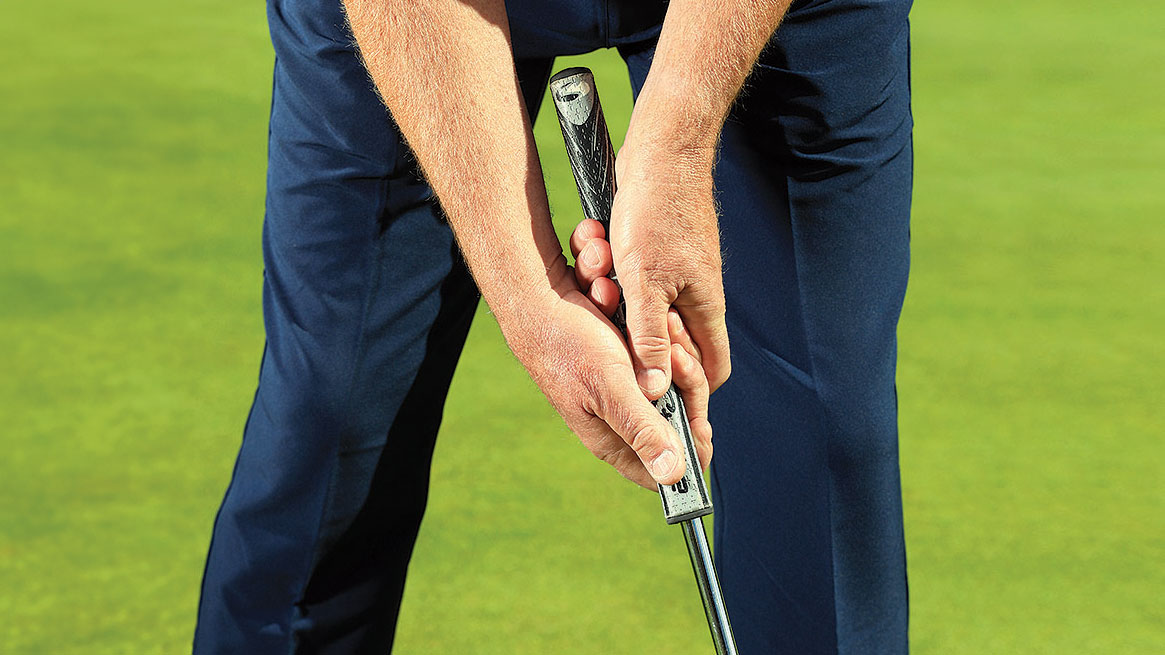
FAQS
What are the putting yips?
Much like the shanks, it's not a problem golfers like to discuss! Despite extensive research around the yips in golf, the exact cause is unknown. One possibility is biochemical changes in the brain that accompany ageing.
Excessive use of the involved muscles and intense demands of coordination and concentration are thought to play a part. Focal dystonia, which involves involuntary spasms in small muscles, has also been mentioned as a possible cause.
What is the correct putting grip?
The putter grip is individual to any golfer, and there are a number of different types of golf grip. However, when putting, we want to feel as though the hands are working as a unit.







